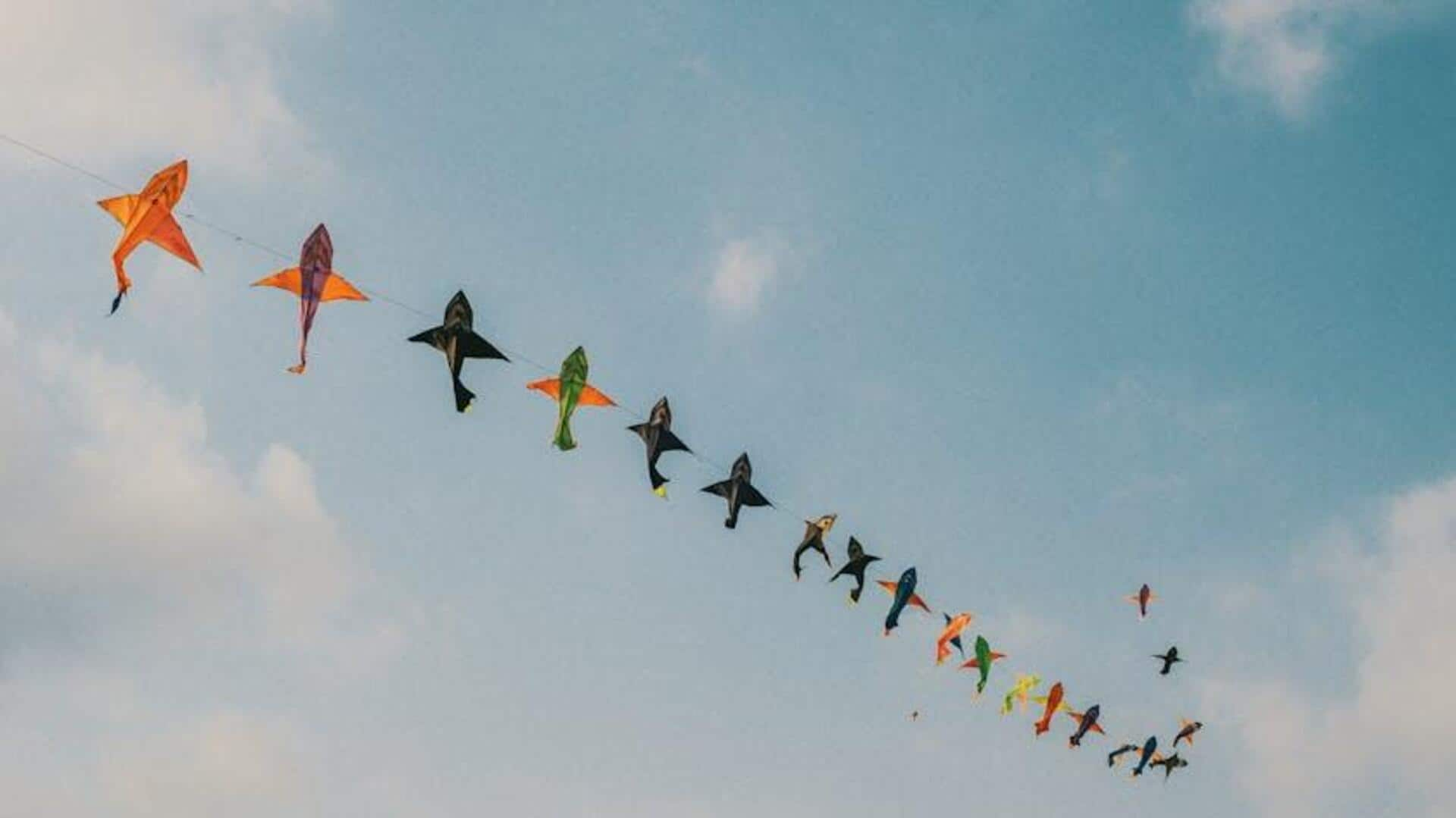
Navigating festive streets: Kite flying traditions in India and Japan
What's the story
Kite flying is a colorful and beloved tradition in both India and Japan, symbolizing celebrations, seasonal transitions, and communal togetherness. In India, the festival of Makar Sankranti brings a riot of color to the skies, while Japan's Hamamatsu Kite Festival features giant kites clashing for dominance. This article delves into the cultural nuances of kite flying in India and Japan.
Significance
The cultural significance of kites
In India, kite flying celebrates Makar Sankranti, symbolizing the awakening of the gods from their long slumber. It is a social festival with delicious sweets made of sesame and jaggery. And, Japan's Hamamatsu Kite Festival is all about celebrating the growth and happiness of children. These unique celebrations highlight the cultural significance of kite flying in both countries.
Craftsmanship
The artistry behind kite making
In India, skilled artisans handcraft kites using bamboo and tissue paper, adorned with bright colors and intricate patterns. Japanese kites, though larger and crafted with bamboo and sturdy washi paper, also feature vibrant colors and intricate designs, often showcasing family crests or traditional motifs. Both exemplify their nation's cultural heritage and artistic expression through the use of symbolic motifs.
Engagement
Community engagement through competitions
Kite flying competitions in India and Japan highlight unique cultural traditions. While India's "kite fights" focus on cutting opponents' strings using glass-coated kites, Japan's teams aim to keep large kites airborne during the Hamamatsu Festival, despite rivals' attempts to create challenges. Both events foster community bonding and teamwork, showcasing each nation's distinct interpretation of this age-old tradition.
Sustainability
Environmental considerations
Kite flying is fun, but it comes with a downside: environmental impact. Discarded strings or non-biodegradable kite materials can cause litter and harm wildlife. Both Indian and Japanese communities are waking up to this problem. Campaigns encouraging eco-friendly materials like cotton strings or biodegradable papers for kites are catching on. These efforts aim to keep the tradition alive while promoting sustainability.
Tips
Tips for first-time flyers
If you are keen to participate in these traditions for the first time, start with simple, easy-to-handle kite designs. Always prioritize safety, especially when it comes to string usage. Attending or participating in local festivals can provide authentic experiences. Respect local customs associated with kite flying. Finally, be mindful of your environmental impact; choose kites made from sustainable materials.